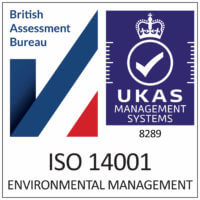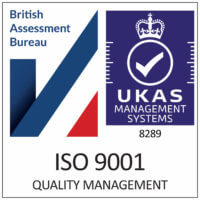The Impact of Enriched Topsoil on Drainage
Nov 21st 2023
Imagine a world where soggy lawns, flooded gardens, and swampy farmland become a distant memory. Well, the impact of enriched topsoil on drainage brings us one step closer to turning this utopian dream into a reality. By focusing on the relationship between soil quality and effective drainage, this article explores how enriching topsoil can revolutionize the way we manage water flow, prevent erosion, and promote healthier vegetation. So, get ready to uncover the fascinating connection between enriched topsoil and improved drainage, and discover how this simple yet transformative solution could be the key to a drier and more sustainable future.
Factors Affecting Drainage
Proper drainage plays a vital role in the success of agriculture, as it directly impacts the health and productivity of the soil. Several factors influence drainage, including the soil composition, topsoil characteristics, water content, slope, and grade of the land. Understanding these factors is crucial for farmers and landowners to ensure optimal drainage in their fields.
Soil Composition
The composition of the soil greatly affects its drainage capacity. Different types of soils, such as clay, silt, and sand, have varying properties that determine how well water can flow and drain through them. The proportions of these components in the soil play a significant role in its ability to allow water to pass through and drain properly.
Clayey Soils
Clayey soils have a high water-holding capacity due to the fine particles that make up their composition. While this may seem advantageous, it also means that clayey soils tend to have poor drainage characteristics. The compact nature of clay particles creates a tight structure with small spaces, making it difficult for water to infiltrate and drain quickly. To improve drainage in clayey soils, farmers often need to amend the soil with materials that increase porosity and break up the compacted structure.
Sandy Soils
In contrast, sandy soils have a low water-holding capacity due to their coarse and larger particles. This characteristic gives sandy soils excellent drainage capabilities as water can easily percolate through the larger spaces between particles. However, the low water-holding capacity can be challenging for plant growth as sandy soils can quickly dry out. To address this, farmers may need to increase water retention in sandy soils by incorporating organic matter or other amendments.
Topsoil Characteristics
The topsoil, which is the uppermost layer of soil, also significantly impacts drainage. Several characteristics of the topsoil, including its depth, texture, structure, and organic matter content, can influence how effectively water drains through the soil profile.
Depth of Topsoil
The depth of the topsoil plays a crucial role in determining the drainage capacity of the soil. Thicker topsoil allows for better drainage as it provides a greater distance for water to travel and infiltrate into the underlying layers. This depth also influences the soil’s ability to retain moisture and prevent waterlogging, providing a balanced environment for plant growth.
Texture and Structure
The texture and structure of the topsoil also play a significant role in drainage. Loamy topsoil, which has an ideal balance of clay, silt, and sand particles, promotes optimal drainage. Its composition allows for good water infiltration, drainage, and retention, creating a suitable environment for plant roots to access water and nutrients. Conversely, compacted or poorly structured topsoil hinders drainage by reducing pore space and restricting water movement. This can lead to waterlogging and negatively impact plant health.
Water Content
The water content in the soil directly affects drainage. If the soil becomes saturated with water, it can lead to waterlogging, which deprives plant roots of oxygen and hampers their growth. Proper drainage helps prevent waterlogging by facilitating the movement of excess water away from the root zone. It is essential to maintain a balance between the soil’s moisture content and drainage capacity to ensure optimal growing conditions for crops.
Slope and Grade
The slope and grade of the land also play a crucial role in drainage efficiency. A steep slope or grade allows water to flow more rapidly, potentially leading to erosion and inadequate water retention within the soil. On the other hand, a gentle slope or grade provides a better opportunity for water infiltration and drainage, promoting a healthy balance between moisture retention and adequate drainage.
Importance of Drainage in Agriculture
Having a proper drainage system in agricultural fields provides numerous benefits that directly contribute to improved crop growth and overall soil health. Let us explore some of the key advantages of effective drainage in agriculture.
Prevents Waterlogging
One of the primary benefits of drainage in agriculture is its ability to prevent waterlogging. Excess water in the soil can suffocate plant roots, leading to reduced growth and even death. Proper drainage ensures that excess water is efficiently removed from the root zone, preventing waterlogging and oxygen deprivation.
Improves Nutrient Availability
Effective drainage also enhances nutrient availability for plants. Excessive water can cause essential nutrients to leach away from the root zone, making them inaccessible to plants. Drainage aids in preventing nutrient runoff, retaining nutrients within the soil, and allowing plant roots to efficiently absorb them.
Reduces Soil Erosion
Inadequate drainage can result in erosion, where water carries away the topsoil and valuable nutrients. This process not only depletes the soil but also contributes to environmental issues such as sedimentation in water bodies. Proper drainage reduces erosion by controlling the flow of water, preventing soil loss, and maintaining the integrity of the agricultural landscape.
Enhances Root Development
Optimal drainage promotes robust root development, which is crucial for plant health and productivity. When excess water is efficiently drained, plant roots can penetrate deeper into the soil and access nutrients and water more effectively. This improves the plant’s ability to withstand stress, improves nutrient uptake, and supports overall growth and development.
Role of Enriched Topsoil in Drainage

Enriched topsoil plays a significant role in improving drainage characteristics within agricultural fields. By enhancing specific properties of the topsoil, farmers and landowners can optimize the drainage capacity of the soil and create favorable conditions for plant growth.
Improved Permeability
Enriched topsoil often exhibits improved permeability, allowing water to infiltrate and drain more easily. This improved permeability is often achieved by incorporating organic matter and amendments that help create larger pore spaces, enhancing the soil’s ability to absorb and drain water. Improved permeability not only prevents waterlogging but also facilitates nutrient uptake by plant roots.
Increased Water Holding Capacity
Enriched topsoil can also have increased water holding capacity, which helps retain moisture for plant growth. By incorporating organic matter and amendments that improve the soil’s structure, the topsoil can retain more water for longer periods. This increased water holding capacity helps plants access water during drier periods, promoting their overall health and productivity.
Reduced Compaction
Compacted topsoil hinders drainage by reducing pore space and restricting water movement through the soil profile. Enriched topsoil, with its improved structure and organic matter content, helps reduce compaction and increase the soil’s ability to drain excess water. This alleviates issues such as waterlogging and provides plant roots with the necessary space for growth and nutrient uptake.
Enhanced Organic Matter Content
Enriched topsoil is often rich in organic matter, which offers several benefits for drainage and overall soil quality. Organic matter improves soil structure by creating aggregates and increasing pore space, enhancing water infiltration and drainage. It also provides a nutrient-rich environment for beneficial microorganisms, contributing to soil health and fertility. As a result, enriched topsoil with higher organic matter content can significantly improve drainage capabilities in agricultural fields.
In conclusion, proper drainage is essential for successful agriculture. Factors such as soil composition, topsoil characteristics, water content, and the slope of the land affect drainage. Enriched topsoil plays a crucial role in improving drainage by increasing permeability, water holding capacity, reducing compaction, and enhancing organic matter content. By understanding the impact of enriched topsoil on drainage, farmers can ensure optimal growing conditions for their crops, leading to improved productivity and overall soil health.






